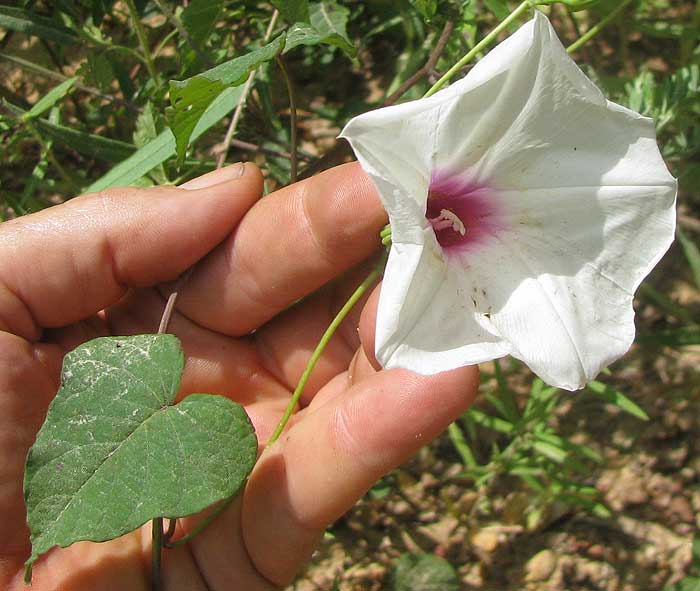Excerpts from Jim Conrad's
Naturalist Newsletter

from the the June 10, 2012 Newsletter issued from the woods of the Loess Hill Region a few miles east of Natchez, Mississippi, USA
WILD SWEET POTATO
Along unmowed roadsides nowadays a pretty morning-glory is beginning to flower, the Wild Sweet Potato, also known as Man-of-the-Earth, Big-root Morning Glory and Man Root, IPOMOEA PANDURATA. Above you can see its distinctively white-with-purple-eye, three-inch-broad
(8cm) flower, starting to wilt a little around the edges from intense mid-morning heat, and smallish, heart-shaped leaf.
This is one of my favorite morning-glories, not only because it's so pretty, but because I can't see one without remembering my days hoeing tobacco back on the farm in Kentucky. Wild Sweet Potatoes were one of the most common weeds in our tobacco patches, and maybe the most aggravating. They'd twine around tobacco stems and have to be unwound individually, for if you just yanked on them their tough stems would shred the precious tobacco leaves.
You might guess that Wild Sweet Potato vines grow from edible tubers, especially since the "real" Sweet Potato, Ipomoea batatas is a member of the same genus. My experience is that tubers on such roadside vines as pictured above are too woody and scrawny to fool with, but I suspect that vines grown in rich, loose soil and frequently watered might produce something worth eating. I read that even such tubers are bitter and must be boiled, perhaps several times, to become palatable.
Indigenous Americans are known to have used the tubers medicinally. A "root tea" was used as a laxative, a diuretic, for lung ailments, and as a "blood purifier." The root mashed and made into a poultice was applied to aching joints.